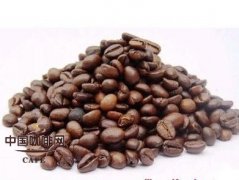There are ten criteria for a good coffee connoisseur to consider

A variety of coffee beans from all over the world, through a variety of different processing methods to provide tasters with a variety of flavors and styles of coffee drinks. From light to full-bodied, from sour to slightly sour, so many varieties are quite confusing to those who taste coffee for the first time and those who try to distinguish them. However, just as there is a well-defined and widely understood method of wine tasting, there is a similar method of tasting coffee.
Professional coffee reviewers choose a special set of utensils, including a large number of white teacups or glasses, hundreds of sample boxes, sample plates (for roasted and fresh coffee beans, respectively), weighing scales and small grinders. Small roasting utensils, spittoons, tasting spoons and well-equipped, state-of-the-art equipment (to measure water content) may also be needed.
Although there is little difference in the appearance of coffee beans, the difference is obvious to experts. For example, some people think that selected Arabica coffee beans look better than Robbins coffee beans. Simple flavor classification can be carried out for coffee from different areas. The coffee beans from South America are very sour and refreshing, the coffee beans from East Africa, Yemen and Ethiopia are full of wine, the Arabian coffee beans from Indonesia are more full-bodied, while the Indian coffee beans are not very sour, but they can be called full-bodied.
When evaluating coffee, there are ten criteria to consider:
Type-Robbard, selected, Arabian, etc.
Taste-smooth, rough, etc.
Particles-too light, too heavy, etc.
Acidity-slightly sour, over-acidic in the upper part, etc.
Freshness-- from old to fresh
Defects-acidic, grassy, moldy, etc.
Coffee cups-roasted, washed, burned, old cups, etc.
Overall assessment-peaceful, rich, bitter, etc.
Fragrance-- from weak to strong
Fullness-not full enough to be quite full
It takes years of experience to be a good coffee connoisseur. These experiences are usually gained from practical work. Tasting coffee is similar to tasting tea and wine, although it is agreed that wine is easier to taste because it lasts longer on the taste buds.
Important Notice :
前街咖啡 FrontStreet Coffee has moved to new addredd:
FrontStreet Coffee Address: 315,Donghua East Road,GuangZhou
Tel:020 38364473
- Prev

How to determine the freshness of coffee beans?
Freshness is the life of coffee how to determine the freshness of coffee beans there are three steps: smell, see, peel. ◎ smells the coffee beans close to his nose and smells deeply to see if he can clearly smell the aroma of the coffee beans. If so, it means the coffee beans are fresh enough. On the contrary, if the aroma is weak, or if the smell is already greasy (like peanuts or nuts for a long time)
- Next

Coffee companion the combination of coffee and milk
Choosing different milk products can give the coffee a different flavor and enjoy the varied taste. 1. Fresh cream: also known as whipped cream. This is a high concentration of cream that separates fat from fresh milk and has a wide range of uses, such as making butter, ice cream, cakes, or making coffee. The fat content of whipped cream ranges from 45% to 50 and the lowest.
Related
- Beginners will see the "Coffee pull flower" guide!
- What is the difference between ice blog purified milk and ordinary milk coffee?
- Why is the Philippines the largest producer of crops in Liberia?
- For coffee extraction, should the fine powder be retained?
- How does extracted espresso fill pressed powder? How much strength does it take to press the powder?
- How to make jasmine cold extract coffee? Is the jasmine + latte good?
- Will this little toy really make the coffee taste better? How does Lily Drip affect coffee extraction?
- Will the action of slapping the filter cup also affect coffee extraction?
- What's the difference between powder-to-water ratio and powder-to-liquid ratio?
- What is the Ethiopian local species? What does it have to do with Heirloom native species?

